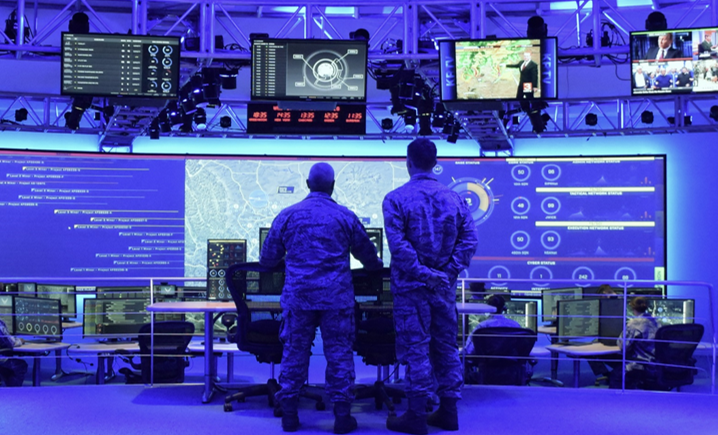The Sentinel Launch Support System, the digital backbone for testing the new intercontinental ballistic missile over its expected 50-year life, has completed critical design review, Northrop Grumman said Oct. 20.
The completion of the review paves the way for “system build, test, and qualification phases,” and clears the LSS for hardware fabrication and installation at Vandenberg Space Force Base, Calif., the company said. Northrop described the event as “another major milestone for the Sentinel weapon system,” which it said was completed on time, and which takes the program one step closer to “launch readiness.”
The LSS, described as a “digital command and control infrastructure,” is being constructed at Northrop’s Roy, Utah, facilities.
“The successful completion of the CDR means we can now build, test, and qualify the system that will ensure the U.S. Air Force can reliably say, ‘Go for launch,’” said Sarah Willoughby, vice president and general manager of strategic deterrent systems.
The Sentinel is set to be deployed at the same bases that currently host the Minuteman III ICBM: Malmstrom Air Force Base, Mont.; Minot Air Force Base, N.D.; and F.E. Warren Air Force Base, Wyo. However, the Air Force uses Vandenberg for regular tests of its ICBM fleet.
The latest milestone gives Sentinel another bit of momentum after it incurred a Nunn-McCurdy breach of in January 2024, indicating major increases in cost and schedule. The overruns were largely attributed to the massive civil engineering effort necessary to prepare hundreds of ICBM silos. The Air Force had originally planned to refurbish old silos, but officials say subsequent work has shown that approach is impractical and uneconomical, and new silos should be built. A subsequent Pentagon review of the program reset and extended its various milestones by two years or more.
The first flight of the all-up Sentinel was originally to have taken place in 2023, and Air Force budget documents from fiscal 2025 indicated it would slip to early 2026. But now the Air Force is not saying when it now expects the first flight to take place. The Government Accountability Office said in July that it assesses first flight will take place no earlier than March 2028.
In a September report, GAO also urged the Air Force to create a “risk management plan” to deal with further potential delays in both the building of Sentinel infrastructure and the missile itself; for example, the Air Force has said the missile’s development has been delayed by difficulties in getting guidance system parts.
Among other recommendations, the GAO said the Air Force might be wise to consider spending money now to buy parts for the extant Minuteman III missiles, which have already been extended past their planned service life several times. The GAO said the Air Force is assessing what it would take to keep some of the Minuteman force in service an additional 25 years, although service officials have insisted there is “no margin” for further delay of Sentinel.
A new acquisition plan for Sentinel is expected to be completed by 2026.


